Nearly 50% of US businesses have adopted SIP trunking or plan to migrate within the next two years, driven by the need to cut communication costs and support hybrid workforces. Traditional phone lines struggle to keep up with modern business demands, leaving companies with rising costs, limited scalability, and fragmented remote communication. SIP trunking addresses these challenges by connecting your existing PBX systems directly to the internet, offering a single, flexible channel for voice, video, and data.
For IT leaders and telecom decision-makers, choosing the right SIP trunk provider can feel overwhelming. This guide breaks down everything from technical integration and cost comparisons to real-world use cases, setup steps, and expert recommendations. Readers will gain actionable insights to streamline communications, improve call reliability, and future-proof their network.
DIDlogic appears throughout this article not as a sales pitch, but as an industry benchmark for reliability, global coverage, and practical deployment speed. By the end, you’ll understand why leading US businesses rely on DIDlogic for SIP trunking and how to select the best solution for your organization.
This foundation sets the stage to explore what SIP trunking actually is and why it matters for businesses across the US.
What Is SIP Trunking and Why It Matters for US Businesses
SIP trunking is a method of delivering voice, video, and messaging over the internet using the Session Initiation Protocol (SIP). Unlike traditional phone lines, which rely on PSTN or ISDN circuits, SIP trunks replace physical connections with virtual channels, enabling businesses to connect their PBX systems directly to the cloud.
Traditional PSTN or ISDN lines often limit scalability and incur high monthly costs for each line. By contrast, SIP trunks allow companies to add or remove channels on demand, cut long-distance expenses, and consolidate voice and data over a single connection. On average, US businesses save 30–50% on communication costs after migrating from legacy lines to SIP (Source: Frost & Sullivan 2024).
SIP trunking also works seamlessly with modern communication frameworks. Whether your organization uses on-premises PBX, cloud-hosted PBX, or unified communications platforms, SIP trunks provide a flexible backbone for VoIP, video conferencing, and collaboration tools. This adaptability supports remote and hybrid work models, ensuring employees can stay connected from any location without compromising call quality.
How SIP Trunks Integrate with Business Communication Systems
SIP trunks extend beyond basic voice services by connecting directly to CRMs, contact center platforms, and remote workforce tools. Integration often happens through APIs, allowing calls to trigger automated workflows, log customer interactions, or initiate callbacks without manual intervention.
Businesses can also assign virtual phone numbers across multiple regions, enabling local presence for sales or support teams. Multi-channel routing ensures calls, messages, and video sessions flow efficiently, supporting both high-volume call centers and smaller distributed teams. The result is a unified communication environment where all tools work together, simplifying management and improving responsiveness across the organization.
Key Benefits of SIP Trunking for US Businesses
SIP trunking delivers measurable advantages that impact both operational costs and business agility. From startups to large enterprises, companies report significant improvements in communication efficiency, network flexibility, and customer experience.
Cost Savings
SIP trunks eliminate the need for physical PSTN or ISDN lines, reducing monthly telecom expenses. For instance, a typical business switching to SIP can cut 30–50% of local and long-distance call costs. Local calls that previously cost $0.05–$0.10 per minute drop to less than $0.01, while international calls can fall from $0.50–$1.50 per minute to $0.03–$0.10.
SMBs benefit immediately by paying only for the channels they need, avoiding unnecessary lines. Enterprises with multiple locations can consolidate their voice traffic into a single network, saving tens of thousands annually in line fees and maintenance costs.
Scalability and Flexibility
SIP trunking enables on-demand addition or removal of communication channels, supporting seasonal spikes, project-based growth, or rapid expansion. SMBs can start with a handful of channels and scale as their team grows, avoiding upfront investment in hardware.
Large enterprises gain flexibility across multiple sites. For example, a retail chain can allocate extra channels during peak sales periods, then reduce them afterward, paying only for active capacity. This flexibility ensures that communication resources match actual business needs without overspending.
Reliability and Call Quality
Modern SIP providers offer high uptime guarantees, typically 99.99% SLA, with redundant routes and failover systems to maintain connectivity during outages. SIP trunks support HD voice, minimizing distortion, and maintain low jitter, latency, and packet loss, keeping calls clear and consistent even under heavy load.
Enterprises running contact centers can rely on SIP trunks for mission-critical operations, while SMBs maintain professional call quality without investing in redundant infrastructure. Multi-location redundancy ensures continuity even if one network path fails.
Integration with Modern Systems
SIP trunks connect seamlessly to VoIP phones, cloud PBX, CRMs, and call center platforms, enabling advanced routing, call logging, and automated workflows. Remote teams gain the same capabilities as in-office staff, supporting hybrid work without complex VPNs or extra lines.
APIs allow automated integration with business tools, from logging calls in Salesforce to triggering callbacks through service platforms. Businesses can assign virtual numbers across regions, unify communications channels, and maintain consistent customer experiences regardless of location.
How to Choose the Right SIP Trunk Provider in the USA
Selecting a SIP trunk provider requires evaluating both technical capabilities and business alignment. The best providers deliver predictable costs, seamless integration, and consistent call quality while adapting to growth and hybrid work needs. Decision-makers should focus on pricing models, feature sets, and network reliability when comparing options.
Pricing and Plans
SIP providers typically offer per-channel or usage-based pricing. Per-channel plans charge a fixed monthly rate for each active line, making budgeting straightforward. Usage-based models bill based on minutes consumed, which may benefit organizations with variable call volumes.
Transparency matters. Some providers advertise low rates but impose hidden fees for number provisioning, failover routing, or international calls. Comparing all-in costs, including setup and monthly recurring charges, ensures businesses avoid unexpected expenses. SMBs often benefit from per-channel models for predictability, while enterprises with fluctuating volumes may find usage-based plans more cost-efficient.
Features and Capabilities
Core features include call routing, virtual DID numbers, failover, and international calling. These capabilities maintain continuity and enable teams to operate globally without extra infrastructure. Advanced features such as AI-based call routing improve contact center efficiency by intelligently directing calls to the right agent, while WebRTC support enables browser-based calling for remote teams.
Choosing a provider that matches your workflow ensures that employees can access voice, video, and messaging without friction. Features should align with business needs rather than tech trends, ensuring every capability delivers practical value.
Network Reliability and Support
High network reliability separates top-tier providers from basic offerings. Look for 99.99% SLA guarantees, geographically diverse redundancy, and disaster recovery protocols. 24/7 technical support ensures any issues are resolved quickly, minimizing downtime and lost revenue.
For multi-location enterprises or high-volume contact centers, redundant routes and automatic failover prevent single points of failure. SMBs also benefit, gaining enterprise-level reliability without building redundant infrastructure themselves. Network performance and responsive support directly impact productivity, customer satisfaction, and operational confidence.
#1 Recommended SIP Trunk Provider: DIDlogic
DIDlogic consistently ranks as a top SIP trunk provider in the US for its reliability, global reach, and cost-effective solutions. Businesses of all sizes trust it to maintain clear, uninterrupted communications across multiple locations. Setup is fast, often taking under 24 hours, and integrations with cloud PBX, CRM systems, and contact centers are seamless.
SMBs benefit from straightforward onboarding, virtual DID numbers, and usage-based plans that scale as they grow. Enterprises leverage DIDlogic for multi-location deployments, redundant routing, and advanced features such as AI-powered call routing and WebRTC support for remote teams. Case studies show organizations cutting communication costs by 30–45% while improving uptime and call quality.
Support is another standout feature. DIDlogic offers 24/7 technical assistance, personalized onboarding, and detailed documentation, ensuring businesses achieve smooth deployment and ongoing reliability.
Other Top SIP Trunk Providers in the USA
While DIDlogic leads the market, other providers offer strong alternatives depending on specific business needs.
Provider 2: Twilio
Twilio provides flexible, developer-friendly SIP trunking with extensive API support, allowing businesses to build customized communication workflows. Pricing is usage-based, with transparent rates for domestic and international calls. Twilio suits tech-savvy teams and fast-growing SMBs that want deep integration with existing software systems.
Provider 3: Bandwidth
Bandwidth stands out for international calling, enterprise scalability, and advanced integration options. Its platform supports both voice and messaging services, making it ideal for multi-national businesses or organizations with large contact centers. Bandwidth’s redundancy options and SLA guarantees make it reliable for mission-critical operations.
Provider 4: Nextiva
Nextiva emphasizes ease of use, unified communications, and small-to-midmarket adoption. Special features include cloud-based collaboration tools, automated call routing, and bundled VoIP packages. It’s particularly suited for SMBs seeking an all-in-one solution without extensive IT overhead, offering fast deployment and simple management.
Comparison of the Best SIP Trunk Providers
The following table highlights key differences between top SIP trunk providers, helping businesses identify the best fit based on their needs:
| Provider | Call Quality | Features | Pricing | Global Reach | Best For |
| DIDlogic | 99.99% SLA, HD voice, low latency, redundant routing | AI routing, WebRTC, virtual DID numbers, failover, multi-channel | Per-channel & usage-based, transparent | Global coverage, multi-region presence | SMBs & enterprises needing reliable, scalable communications |
| Twilio | Excellent, HD voice, programmable routing | Extensive API, virtual numbers, CRM integrations | Usage-based, transparent | US & selected international coverage | Tech-driven SMBs, developers, custom integrations |
| Bandwidth | High-quality, low jitter, SLA-backed | Voice & messaging, advanced integrations, redundancy | Usage-based & per-channel | US & international | Large contact centers, enterprise scalability |
| Nextiva | Good, HD voice, reliable for SMBs | Unified communications, VoIP bundles, automated routing | Per-user & bundled plans | US-focused | SMBs seeking easy deployment & all-in-one solution |
DIDlogic stands out for combining enterprise-grade reliability, SLA-backed redundancy, and broad integration capabilities, making it a strong choice for both small businesses and large organizations with multi-location operations.
How to Set Up SIP Trunking for Your Business
Implementing SIP trunking requires clear preparation and structured steps. Following best practices ensures smooth deployment and optimal performance.
Technical Requirements
- Internet Bandwidth: Ensure sufficient bandwidth for expected concurrent calls. Typically, 100 kbps per simultaneous call is a minimum for HD voice.
- PBX Compatibility: Confirm your system supports SIP trunking. On-premises PBX or cloud PBX platforms may require different configurations.
- Hardware vs Cloud PBX: Decide whether to use existing PBX hardware or migrate to a cloud-hosted system. Cloud PBX reduces physical infrastructure but requires stable internet.
Step-by-Step Setup Process
- Register with a SIP Provider: Choose a provider (like DIDlogic) and select your plan. Provide necessary business information and assign desired DID numbers.
- Configure Channels: Allocate channels based on call volume. Configure failover and routing options for redundancy.
- Integrate with Systems: Connect SIP trunks to PBX, CRMs, contact centers, and remote workforce tools. Set up APIs if needed for automation.
- Test Call Quality and Failover: Verify call clarity, latency, and jitter. Simulate outages to ensure automatic failover works correctly.
- Monitor and Adjust: Track usage, adjust channels, and optimize routing based on traffic patterns and team requirements.
Following these steps helps businesses deploy SIP trunks efficiently, ensuring reliable communications across all locations and platforms.
SIP Trunking vs Other Communication Solutions
Choosing the right communication system requires understanding the differences between SIP trunking, PSTN, and hosted VoIP.
SIP vs PSTN
SIP trunks replace traditional PSTN/ISDN lines with internet-based channels. While PSTN offers stable, predictable service, it is costly and limited in scalability. SIP trunks reduce monthly line fees by 30–50%, support on-demand channel allocation, and enable integration with cloud PBX, VoIP, and unified communications platforms. Reliability is comparable when SLA-backed providers and redundant routes are used, but PSTN cannot match SIP’s flexibility or global reach.
SIP vs Hosted VoIP
Hosted VoIP provides fully cloud-managed voice services, ideal for smaller businesses without existing PBX systems. SIP trunking, however, is superior for organizations that already operate PBX systems, need multi-location integration, or require enterprise-grade reliability. Hybrid setups combining SIP trunks with hosted VoIP allow remote users to leverage cloud phones while maintaining centralized trunk management for cost efficiency and failover.
Future of SIP Trunking in the USA
SIP trunking continues to evolve alongside cloud adoption and remote work trends. AI-based routing improves call handling by dynamically directing traffic, while STIR/SHAKEN compliance combats spoofing and enhances trust in caller ID.
WebRTC integration allows browser-based calling for remote teams without additional hardware, creating a hybrid SIP + WebRTC model that supports distributed workforces. Enterprises and SMBs increasingly adopt this approach for flexibility, cost control, and unified communication management. Predictably, call centers and multi-location businesses will continue shifting to cloud-native SIP deployments, emphasizing scalable, resilient, and feature-rich platforms.
FAQs
Which SIP trunk providers are officially certified in the USA?
Providers like DIDlogic, Twilio, and Bandwidth hold certifications for compliance with US telecom regulations, including FCC requirements.
Can small businesses benefit as much as large enterprises from SIP trunking?
Yes. SMBs save on costs, scale channels as needed, and gain advanced features like virtual numbers and API integrations previously reserved for enterprises.
What’s the average cost of a SIP trunk in the USA?
Costs typically range from $20–$50 per channel per month, with usage-based pricing as low as $0.01–$0.03 per local minute and $0.05–$0.10 for international calls.
Do SIP trunk providers offer toll-free and local DID numbers?
Most providers, including DIDlogic, offer both toll-free and local DIDs, enabling businesses to maintain a regional presence across multiple markets.
How secure is SIP trunking for US businesses handling sensitive customer data?
SIP trunks are highly secure when providers implement encryption (TLS/SRTP), firewall protection, and network redundancy. Enterprise-grade providers also maintain compliance with data privacy regulations.
Can I use multiple SIP providers for redundancy in the USA?
Yes. Many businesses configure multiple SIP providers to ensure failover, maintain uptime, and distribute traffic across redundant routes.
Further Reading










